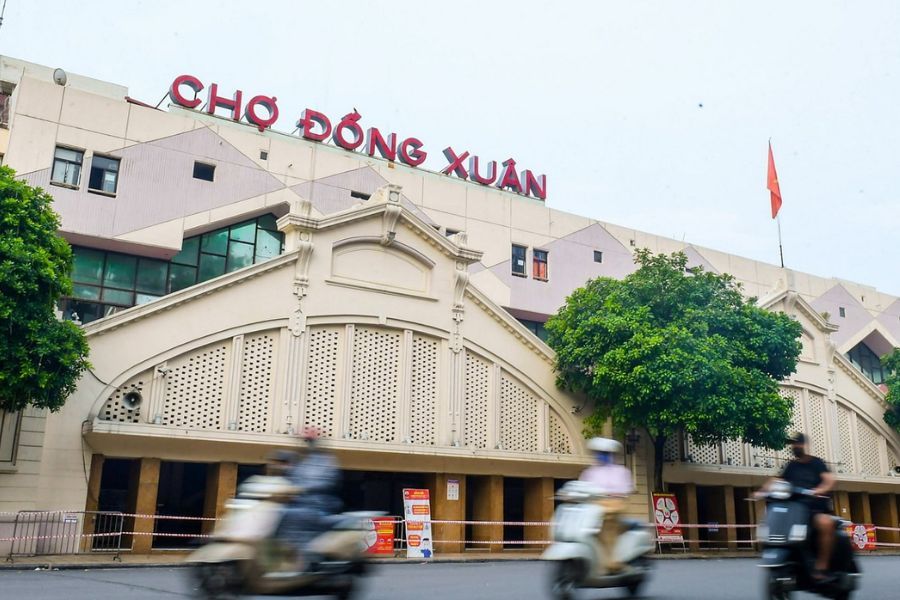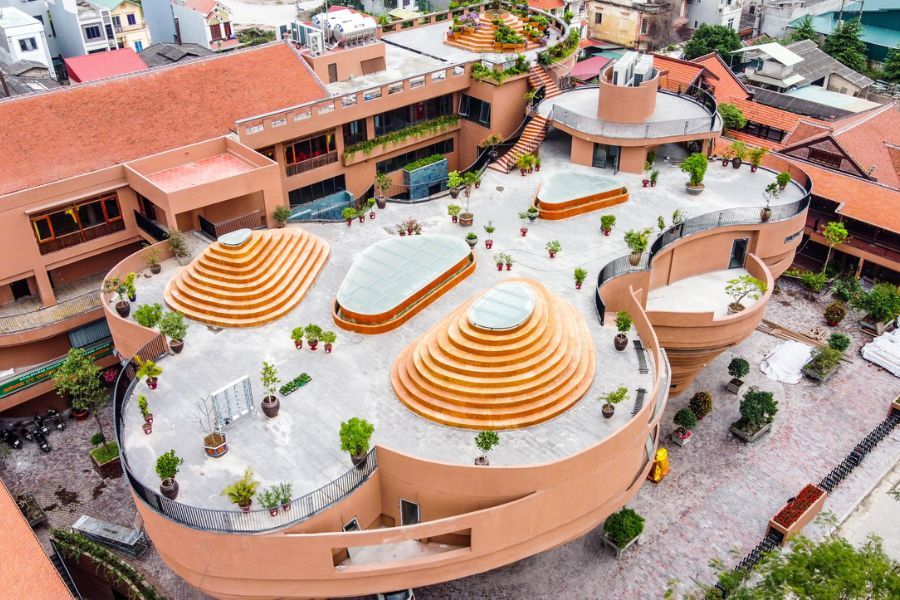Unveil Vietnam’s Heroic Past At The Ho Chi Minh Museum
The Ho Chi Minh Museum in Hanoi is an impactful journey through the life and legacy of Vietnam’s most loved leader. From its impressive architecture to its greatly significant exhibits, it should not be missed by anyone traveling to Hanoi for either historical or cultural purposes.
Table of Contents
ToggleIntroduction To The Ho Chi Minh Museum
The Ho Chi Minh Museum is certainly one of the main highlights of the Ba Dinh historical and cultural complex in Hanoi. Established to honor Ho Chi Minh, Vietnam’s most loved leader, the Ho Chi Minh Museum speaks of the life, revolutionary career, and legacy of President Ho Chi Minh through photographs, documents, and personal objects.
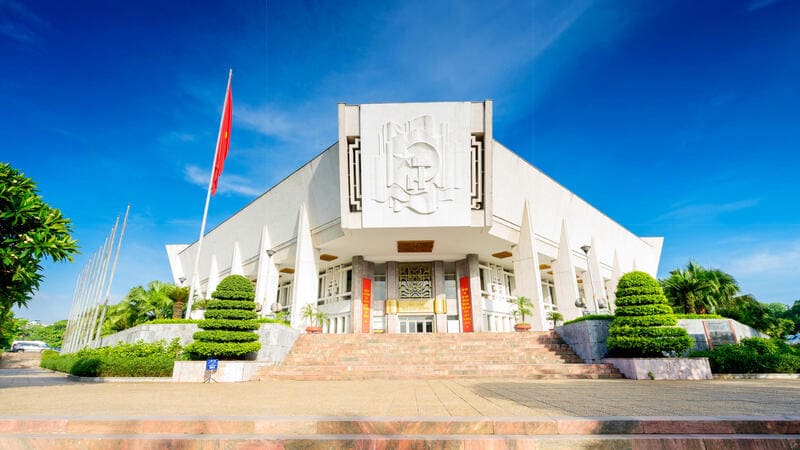
The museum is part of a larger network of important sites, including the Ho Chi Minh Mausoleum, the Presidential Palace Historical Site (including the stilt house, fish pond, and fruit garden), and the One Pillar Pagoda. For those who want to engage with the broader context of Uncle Ho’s legacy, visiting all four sites is a great way to take in his life and the ideals he represented.
History Of The Ho Chi Minh Museum
The Ho Chi Minh Museum was born out of a clear national desire to express the proud nation to honor President Ho Chi Minh’s life and limbs. Following his death in September 1969, the Politburo and Central Committee of the Communist Party of Vietnam agreed to establish a mausoleum and a museum in his honor, displaying the national deep admiration and respect.
In 1970, the committee started a collection of the documents, pictures, artifacts, and other material relating to Ho Chi Minh’s life and revolutionary career. In the years since the team carried out the difficult work of developing a plan to maintain the image of Ho Chi Minh, and began to collect the materials the museum would require.
In 1977, the Politburo officially adopted a resolution forming the Ho Chi Minh Museum as a national center for researching and displaying materials related to Ho Chi Minh and the revolutionary history of Vietnam.
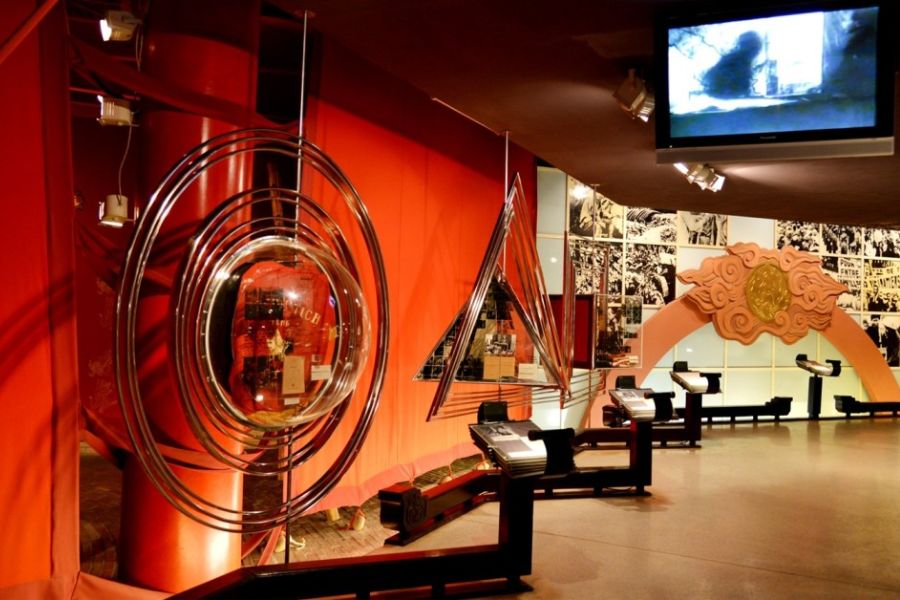
In 1985, as the 40th anniversary of the August Revolution and Vietnam’s National Day (September 2) approached, building began on the museum, following a significant event, the groundbreaking. Then the plan was to dedicate the museum before the 100th anniversary of President Ho Chi Minh’s birth.
On May 19, 1990, which was the day of the centenary of a certain historic person, Ba Dinh Square, which was the location of the person, President Ho Chi Minh’s reading of the Declaration of Independence on September 2, 1945, was formally opened to the public in the museum.
Unique Architecture Of The Ho Chi Minh Museum
The Ho Chi Minh Museum has bold and symbolic design features. This building is shaped like an abstract white lotus, a symbol of purity and simplicity that strongly resembles President Ho Chi Minh’s character. Situated centrally at the Ba Dinh historical site, the museum rests amid calm green gardens and reflective pools, providing a serene space for visitors to learn and consider.
Ground Floor – Biographical Exhibits of President Ho Chi Minh
As visitors walk into the museum’s impressive lobby, they first encounter a prominent bronze depiction of President Ho Chi Minh. On the ground floor is a large exhibition area devoted to his personal life and revolutionary career, subdivided into nine sections or themes:
- Childhood and Early Years (1890-1910): Artifacts and images abstract. Ho Chi Minh was born in his place of origin, Nghe An.
- Journey for National Salvation (1911-1920): Section displaying typical signs of the early years of his journey abroad, where working and studying in multiple countries led him to seek a pathway to liberate Vietnam.

- Activities in France: Documents and images from Ho Chi Minh’s life in France during his engagement with and exposure to international communist and anti-colonial movements.
- Formation of Ideology: Support for exhibits showing the formation of his political ideas and his intentions and preparations for the founding of the Communist Party of Vietnam.
- Struggles for Independence: Exhibition includes materials from his efforts in revolutionary activities both in Hong Kong and Guangxi while imprisoned.
- War of Resistance (1945-1954): Exhibits give a glimpse of his life in the remote forest with his determination to address the struggles stemming from the colonial rule over decades of time.
- Diplomacy for National Construction: exhibits from materials give an account of his leadership in building the North, and support of the South’s fight for liberation.
- Final Years (1960s-1969): Personal items and documents from his final years and death in 1969.
- Legacy: A thematic wrap-up of his life’s accomplishments and contributions to the nation.
Second Floor – Vietnam’s Historic Victories Under His Leadership
The second floor continues the stories from the first floor, focusing more deeply on Vietnam’s heroic struggle for independence under the leadership of Ho Chi Minh. The second floor is designed as a series of interactive symbolic spaces that allow visitors to experience these stories through artistic installations in which three-dimensional, historical realities are recreated.
Each exhibit cluster is built in a particular period, where the significance of the stories of the time is revealed through the combination of historical narratives and narratives told visually. Sculptural emotional focal points link the exhibit spaces with the biographical exhibits of Ho Chi Minh, which illustrate the strength, unity, and determination of the people.
- President Ho Chi Minh’s Hometown
- 1930-1931 Revolutionary Uprising and Nghe Tinh Soviet
- Pac Bo Revolutionary Base
- Resistance Against Colonization by France, and Victory at Dien Bien Phu
- Memorial Hall for President Ho Chi Minh
- Resistance to Aggression by the Americans and Spring Victory 1975
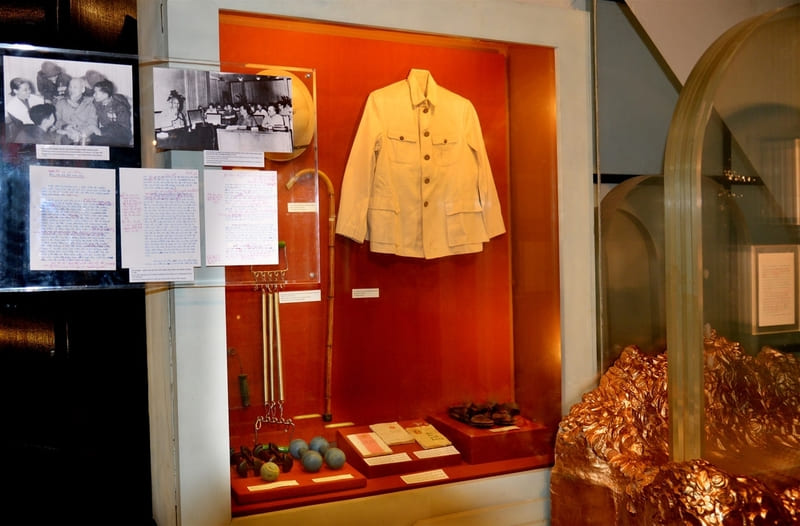
Third Floor – Global Historical Context and Influences
The upper level provides key international context by illustrating important global events that shaped and influenced President Ho Chi Minh’s worldview and Vietnam’s revolutionary trajectory. By providing these contexts, visitors will be better positioned to comprehend the major ideational and geopolitical shifts in the century and how they were drawn into Vietnam’s chronology.
- The World at the End of the 19th and Beginning of the 20th Centuries
- The Russian October Revolution and Its Worldwide Implications
- The Anti-Fascist Struggle
- The Changing Global Landscape after the 2nd World War
- Ho Chi Minh and the Global Anti-Colonial Movement
- Vietnam’s struggle for Peace, Independence, and Social Development
- President Ho and the Youth Generation
- Today’s Vietnam
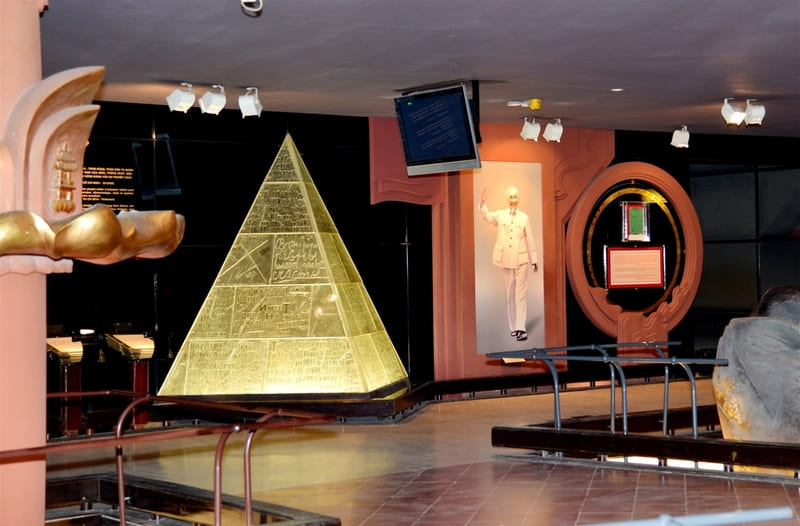
3 Cultural Experiences You Shouldn’t Miss
While the Ho Chi Minh Museum has some historical displays, it serves as a window into Vietnam’s cultural identity through the life of one of its important historical figures. Here are four cultural experiences that will have you plunging into the richness of Vietnam’s experiences.
Walk the Path of Ho Chi Minh
Start by walking through the timeline of President Ho Chi Minh’s life as it relates to Vietnam’s struggle for independence, with photos, handwritten letters, as well as personal belongings. The timeline moves through the various phases of his life, beginning with his early years growing up in Kim Lien village and proceeding through the travels he had on many continents while he searched for ways to liberate his country. Each phase highlights important turning points in his life and identifies significant events.
The exhibit’s layout works to create an atmosphere where you can feel a connection to Ho Chi Minh’s desire for independence, unity, and simplicity while also placing value on respect and emotions. This is not just a factual journey through history; this is a personal journey through the life of a human being.
Learn About Symbolic Architectural Design
The design of the building itself is a cultural experience. The building is designed in the shape of a flowering lotus, which is a symbol of purity and worship. The overall shape is both fun and symbolic. As visitors wander through the spacious halls of the museum, pay attention to how the layout and light flow take you from the past to the present. The museum offers so much symbolism.

From the colors used, from the roof patterns, and murals, each element symbolically represents Vietnamese identity and the attributes of President Ho Chi Minh’s character. Whether an architecture lover or simply a curious traveler, recognize the symbolic architectural design as you experience how the considerable space interprets a story.
Reflecting In The Courtyard And Memorial Spaces
After walking through the museum’s interiors, move into the serene space of the courtyard and feel the sounds of the city dissipate into stillness. The outdoor areas are carefully landscaped as well, with trees planted in memory, stone benches for reflection, and plaques quoted from Ho Chi Minh himself. This space is an opportunity to stop and spend time with the myriad of feelings and emotions you have absorbed.
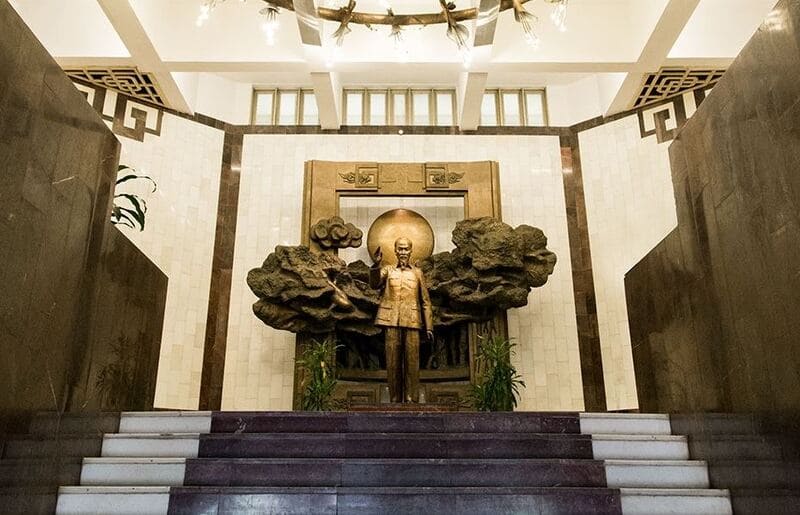
Entrance Fee
Visitors will find that entry into the Ho Chi Minh Museum is free of charge for all Vietnamese citizens, so every local can revisit the life and legacy of President Ho Chi Minh. However, there is an entrance fee for foreign visitors.
| Visitor Type | Ticket Price |
| Foreign visitors | 40,000 VND/person |
| Vietnamese citizens | Free |
| People with disabilities (all nationalities) | Free |
| Members of the International Council of Museums (ICOM) | Free |
Opening Hours
The Ho Chi Minh Museum is open to the public on most days of the week. However, it is important to make note of the days it is closed to ensure your visit will coincide with an open day.
| Day | Opening Hours |
| Tuesday, Wednesday, Thursday, Saturday, Sunday | 08:00 AM – 12:00 PM |
| 02:00 – 04:30 PM | |
| Monday, Friday | Closed |
At times, you can experience a quieter time visiting the museum. Generally, visiting the museum shortly after opening is typically a quieter time. Usually, the museum sees fewer visitors during weekdays (other than Monday and Friday) as opposed to weekends.
If you are already planning a trip to the Ba Dinh historical complex, it provides an excellent opportunity to combine your time at the Ho Chi Minh Museum with your time at nearby attractions such as the Ho Chi Minh Mausoleum and One Pillar Pagoda etc.

How To Get To The Ho Chi Minh Museum
The museum is centrally located in Hanoi, making it easy to get there in your private vehicle, motorbike, or bus. If driving, there is parking available close to the museum, but it can be challenging to find parking during busy times.
By Taxi Or Ride-Hailing Apps
Taxis are plentiful in Hanoi, or you can use Grab, Be, or other app-based ride services for a prepaid ride. Below is the estimated taxi fare for one way:
| Departure Point | Estimated Fare (VND) | Estimated Fare (USD) |
| Hoan Kiem Lake | 60,000 – 90,000 | $2.50 – $3.50 |
| Hanoi Old Quarter | 50,000 – 80,000 | $2.00 – $3.00 |
| Hanoi Train Station | 40,000 – 70,000 | $1.50 – $3.00 |
| West Lake (Tay Ho) | 80,000 – 120,000 | $3.50 – $5.00 |
| Noi Bai Airport (one way) | 250,000 – 350,000 | $10 – $14 |
By Bus
If you are taking the bus to the museum, there are several bus options, see below.
| Bus Number | Route | Operating Hours |
| 9 | Hoan Kiem Lake – Hoan Kiem Lake | 05:00 AM – 09:00 PM |
| 14 | Hoan Kiem Lake – Co Nhue | 05:00 AM – 09:00 PM |
| 33 | My Dinh – Xuan Dinh | 05:04 AM – 09:04 PM |
| 45 | Times City – Nam Thang Long | 05:00 AM – 08:00 PM |
Things To Know Before Traveling To The Ho Chi Minh Museum
The Ho Chi Minh Museum is an important and serious location. To ensure a respectful and effective visit, consider the following:
- Dress respectfully and modestly. Hats and caps should be removed. Follow the prescribed tour routes, do not crowd, and always be polite and allow passage for others, including seniors, the elderly, and individuals with disabilities.
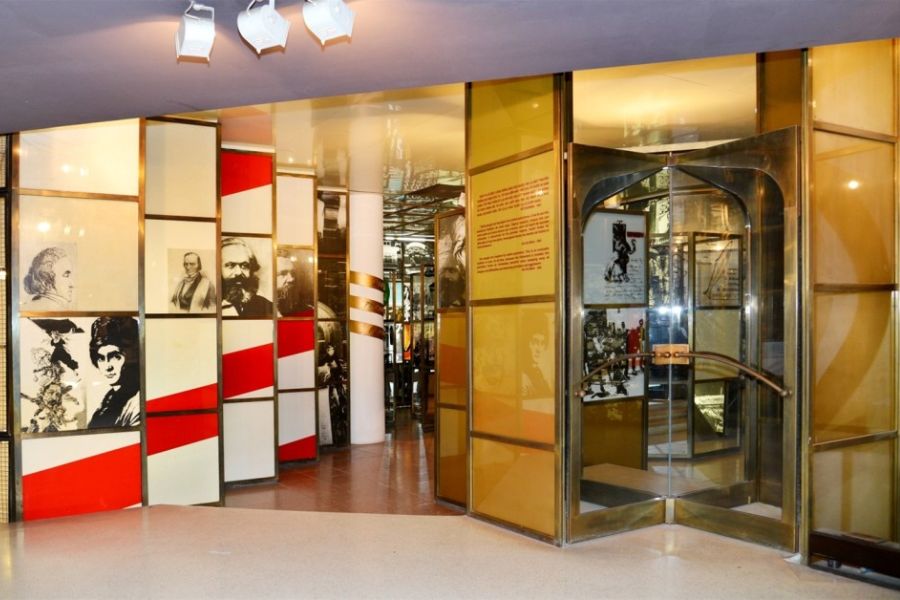
- Do not bring prohibited items into the museum, such as drugs, flammable and explosive materials, incendiaries, weapons, toxic substances, or pollutants.
- Remove, or place in the designated baggage area, your backpacks and handbags, or large items.
- Practice personal hygiene. No smoking is permitted. Eating snacks is also prohibited. No loud noises.
- Do not touch, lean, or lean that will cause injury to the photos, documents, artifacts, or equipment/display.
- Children 10 and under must follow an adult, or be part of a supervised group, or a supervised group school tour. House rules apply for everyone’s protection.
Final Thoughts: Is The Ho Chi Minh Museum Worth Visiting?
Undoubtedly, worth a visit if you have a chance. The Ho Chi Minh Museum provides an even greater insight into Vietnam’s much-loved leader and Vietnam’s historical journey. The museum is easy to find since it’s located along with the Ba Dinh complex and is a real treat for historians and interested travelers. Allow Seni World to help you discover this and many other inspiring spots on your travels in Vietnam.










